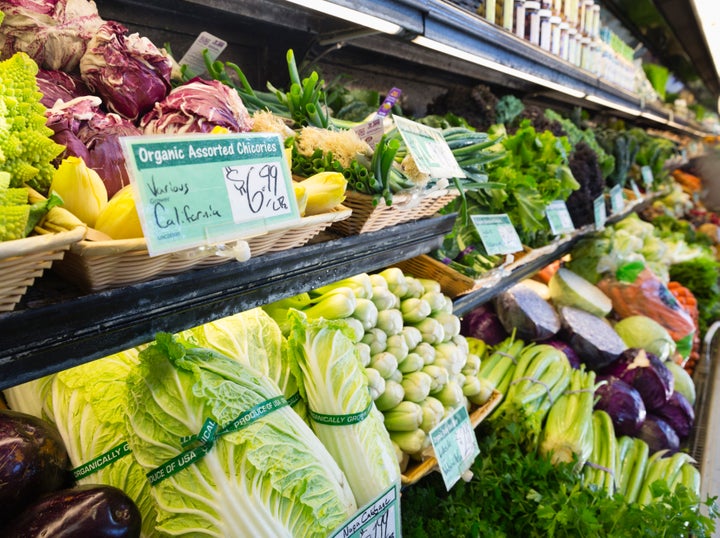
The U.S. has a new federal law that will, for the first time, require labeling of genetically modified ingredients in food. President Barack Obama signed the bill into law Friday, and the secretary of agriculture has two years to finalize the labeling standard.
The new law, which was largely supported by the food industry, puts the U.S. in line with 64 other countries that also require manufacturers to label genetically modified foods. Two-thirds of Americans also support labeling GMOs. But while labels for genetically modified foods might seem sensible — or at the very least, harmless — the issue obscures some very important facts about the GMO debate.
Most notably, the law doesn’t align with scientific consensus on the safety of GMOs ― or the reality that the U.S. food system is largely made up of genetically modified foods. Here’s what the science really says about genetically engineered foods.
The scientific community agrees: GMOs are safe
When it comes to scientific consensus on GMO foods, it’s not even close.
A recent analysis of over 1,000 studies, conducted by the National Academies of Sciences, Engineering and Medicine and released in May, concludes that there’s no safety reason to justify labeling GMOs except perhaps a consumer’s right to know. They also found that GMOs are generally safe and don’t seem to harm the environment, reports The New York Times.
In January 2015, a Pew poll surveyed both the general public and scientists from the American Association for the Advancement of Science and found that 88 percent of scientists thought GMOs were “generally safe.” To put that in perspective, only 87 percent of scientists in the poll agreed that human activity is causing climate change.
Why do most scientists think this way? Because time and again, scientific research on the safety of genetically modified foods has proven them safe to eat. The American Medical Association stated back in 2012 that there is “no scientific justification for special labeling of bioengineered foods” and that “voluntary labeling is without value unless it is accompanied by focused consumer education.” The aforementioned AAAS has also announced in 2012 their support for GMO foods, warning that labels could “mislead and falsely alarm consumers.” The World Health Organization, another independent, non-corporate organization, also concludes that all the GMO products available on the market are safe for people to eat.
From a regulatory perspective, the U.S. Food and Drug Administration classifies genetically engineered plants as safe, indicating that foods made from these plants are as nutritious as non-genetically engineered foods and are no more likely to cause an allergic reaction than non-genetically engineered counterparts.
But that message has not gotten to the public: In the same poll, 57 percent of the American public thought GMOs were “generally unsafe.”
Human beings have been genetically modifying food for millennia
In their 2013 editorial against GMO labeling, the magazine Scientific American compares ancient agricultural methods like breeding to the genetic splicing that creates disease-resistant crops:
We have been tinkering with our food’s DNA since the dawn of agriculture. By selectively breeding plants and animals with the most desirable traits, our predecessors transformed organisms’ genomes, turning a scraggly grass into plump-kerneled corn, for example. For the past 20 years Americans have been eating plants in which scientists have used modern tools to insert a gene here or tweak a gene there, helping the crops tolerate drought and resist herbicides. Around 70 percent of processed foods in the U.S. contain genetically modified ingredients.
Genetically engineered foods hold a great deal of promise for poor communities
You’ve probably heard of “golden rice,” a genetically modified food enriched with Vitamin A. It was created for poor communities in Southeast Asia and Africa, where the primary food staple is rice, but children are going blind for lack of essential nutrients like vitamin A.
In April, the White House Office of Science and Technology Policy and the U.S. Patent and Trademark Office awarded the creators of golden rice with the Patents for Humanity Award, which recognizes private sector researchers for their contribution to global health.
But as William Saletan of Slate notes in his year-long investigation on the safety of GMOs, golden rice still isn’t commercially available, even though it was invented 16 years ago. Saletan attributes this delay to a ferocious anti-GMO movement spearheaded by Greenpeace. From Slate:
Two years ago anti-GMO activists destroyed a field trial of the rice in the Philippines. Last year they filed a petition to block all field tests and feeding studies. Greenpeace boasted, “After more than 10 years of research ‘Golden’ Rice is nowhere near its promise to address Vitamin A Deficiency.” And a million more kids are dead.
Consumers already have a label for non-GMO foods
GMOs are in the majority of America’s food supply. An estimated 95 percent of sugar beets, 94 percent of soybeans, 90 percent of cotton and 88 percent of feed corn are genetically engineered, reports USA Today.
But foods that label themselves “organic” have to comply with non-GMO rules, and so anyone who is concerned about avoiding them need only to steer himself toward the organic sections of the supermarket.
A version of this story originally appeared August 2015.
